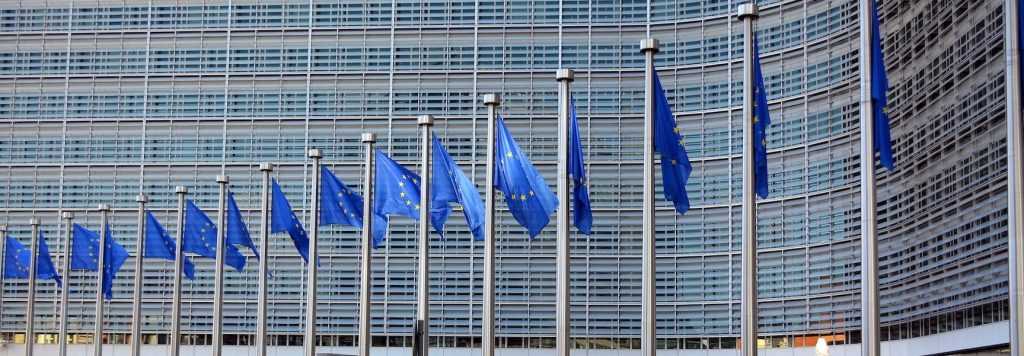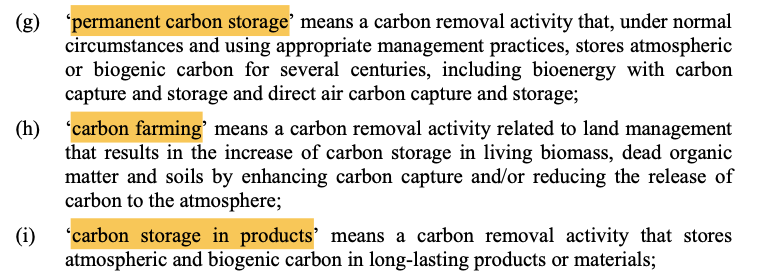
The global race to certify removals is gathering speed. The European Commission has published its proposal for the EU’s Carbon Removal Certification Framework (CRCF), putting Europe in the lead in carbon removal policy design. Next to the EU, several countries, including the UK and US, are considering the best options to quantify removals.
In addition to governments, there is a long list of initiatives and standards in different stages of development, creating carbon removal methodologies for carbon markets. These include the CCS+ Initiative, Verra, C-capsule, Puro.earth, Gold Standard and Article 6.4 mechanism under the Paris Agreement.
Why this matters
Carbon removal has a distinct role in the global climate mitigation policy, but there is a lack of robust monitoring, reporting and verification rules for many removal activities. Given that CRCF would apply across Europe, this can enhance the harmonisation in a field that is still becoming increasingly fragmented.
The EU needs a trustworthy system to quantify removals so that it can achieve climate neutrality by 2050 and net negative emissions thereafter. It’s only possible to scale up what can be quantified, and the scale-up of removals needs to be done especially carefully — as a complementary climate mitigation tool next to strongly prioritised steep cuts in emissions.
By building on the CRCF proposal, the EU can establish a world-leading carbon removal certification framework that could be used as a blueprint globally.
Main principles
The proposal sets out a general legislative framework that establishes (1) the quality criteria for carbon removals in the EU, (2) the rules for the certification of carbon removals, and (3) the rules for the functioning and recognition of the certification schemes by the European Commission. All in all, the goal is to facilitate the deployment of carbon removals in the EU.
The scope is limited to carbon removal activities within the EU, and the use of the framework is voluntary. The document outlines three types of carbon removal activities: permanent carbon storage, carbon farming, and carbon storage in products.

The guiding principles of the framework are “quantification of carbon removal benefits, additionality, long-term storage and environmental sustainability”. It requires the certification schemes to be operated via reliable and transparent procedures, compliance with the certification requirements to be verified by third-party auditors, and all information on the certified carbon removals to be publicly available and traceable through public registries.


Establishing the framework is the first step and doesn’t answer all questions on implementation. Those will be tackled when detailed certification methodologies are developed. During this process, “specific rules will be tailored to the characteristics of the different types of carbon removal activities: for instance, the rules will recognise the strong guarantees for permanence offered by solutions storing carbon in geological formations, while clarifying minimum sustainability requirements for carbon farming activities”. The European Commission will develop methodologies in close consultation with a soon-to-be-established expert group.

The certification framework is expected to be “dynamic by design” with built-in governance to evolve based on the progress in removal methods.
What’s missing?
The main question is the demand for certification. What is the incentive to certify? What can the certificates be used for? It has been proposed as a voluntary framework – the potential use in public funding like Common Agriculture Policy seems to nudge things towards something of a requirement.

The CRCF includes a long list of demands on standards, and the transaction costs don’t seem to be negligible. The wider governance framework around the CRCF, and the specific touch points with existing legislation, are missing. References to the Nature Restoration Law, Common Agriculture Policy, Corporate Sustainability Reporting Directive, Green Claims Initiative and the Renewable Energy Directive but “build on or play an important role” is not the level of granularity the stakeholders are looking for.
There is a lack of clarity around the basic concepts, including the definition of high-quality removals, for how long the CO2 needs to be removed, how exactly the additionality testing will look like, and how permanence is tackled across the carbon removal activities of a very different nature. How to compare the climate impact of Direct Air Capture with Carbon Storage with soil carbon?
Next to public financing schemes in a few countries, voluntary carbon markets have currently been funding novel carbon removal methods. Given the lack of clarity on how different types of CRCF certificates will be used across the different uses outlined in the visual above, how will the environmental integrity of the system be ensured? How will it be guaranteed that fossil emissions don’t end up being neutralised with short-term removals? The proposal doesn’t clarify whether the certificates for the three types of carbon removal activities are fungible or should have distinct use cases.
Another missing element is information on how the role of CRCF is expected to change from pre-2030 to post-2030. The Sustainable Carbon Cycles Communication indicated a willingness to incorporate removals under the EU compliance frameworks post-2030, and that has been confirmed by the Commission at several events in 2022. However, the inclusion in compliance frameworks won’t work based on a voluntary tool. There is also a difference between tracking all emissions and removals versus quantifying certain additional activities. Without clarity about the end purpose/use of the CRCF, it’s impossible to judge whether it can deliver what it’s supposed to deliver.
Beyond certification: credible carbon removal targets
There are elements the CRCF could have included, as described above. And then there are those that the CRCF is just not designed to address but that are equally relevant in designing the EU’s carbon removal policy. Most notably, the specific carbon removal targets and corresponding carbon removal strategies.
The Sustainable Carbon Cycles communication included a few modest aspirational targets. However, aside from the overall EU-level objective of 310 Mt CO2 equivalent of net removals in the LULUCF sector in 2030, the EU law does not include any other targets specifically on removals. And many carbon removal activities fall outside the LULUCF sector.
The recent European Commission’s guidelines on National Energy and Climate Plans (NECPs) highlight the need to specify the role of removals. This is a welcome development and will hopefully lead to more specifics on EU Member State’s plans for scaling up removals. The first drafts of new NECPs will be available by June 2023, with final approval planned for June 2024.
Zooming out from NECPs takes us to the EU’s Nationally Determined Contribution. In future updates, this is where the EU could pave the way with specific targets for removals beyond the LULUCF sector and inspire other countries to follow suit.
Next steps
The European Commission’s proposal is only the first step in a longer process. From today onwards, the European Parliament and the EU Member States will start studying the proposal and spelling out the changes they’d like to see in the text. Eventually, after the negotiations between the three EU institutions — the Commission, Parliament and the Council of the EU — lead to an agreement, we’ll end up with a piece of legislation.
When might that happen? The optimists are hoping for a deal by the end of 2023, the realists are counting on 2024. The EU decision-making process doesn’t have a specified timetable, it always boils down to the complexity of the subject and the political will to make progress.
The current European Commission and Parliament are most likely keen to finalise the CRCF before the end of their term in 2024, leaving their successors to spearhead the work on post-2030 climate policy. The latter also includes defining the EU’s climate target for 2040 and the role of carbon removal within that. There is still much work ahead in designing the EU’s carbon removal policy.
***
Thank you for reading! Sign up for updates below, and stay tuned for the next posts.
Would you like to use (parts of) the text? Go ahead on the condition that you explicitly refer to this post and include a link.
Thank you!

